Whether a muzzle brake, compensator, flash hider, suppressor, or something else entirely, the world of AR-15 muzzle devices is vast and deep. The best one for you may not be the best one for me, so try not to freak out when you see my list of the six best muzzle devices for the modern sporting rifle . . .
Before we get to the autistic screeching, check out TTAG’s extensive previous AR-15 muzzle brake and flash suppressor tests:
• 5.56 Muzzle Device Shootout #1 (recoil reduction test)
• AR-15 Muzzle Brake Shootout #2
• AR-15 Muzzle Brake Shootout #3
• .30 Caliber Muzzle Brake Shootout
• AR-15 Flash Hider Shootout #1 (flash suppression / muzzle flash test)
• AR-15 Flash Hiding Test #2
Muzzle brake test #4 will happen soon! It’s scheduled for three months ago, so it will be along any time now. This test will include recoil reduction, dB measurement (sound volume level), and muzzle blast measurement (concussion — the overpressure wave through the air that thumps your chest and sinuses).
Without further ado . . .
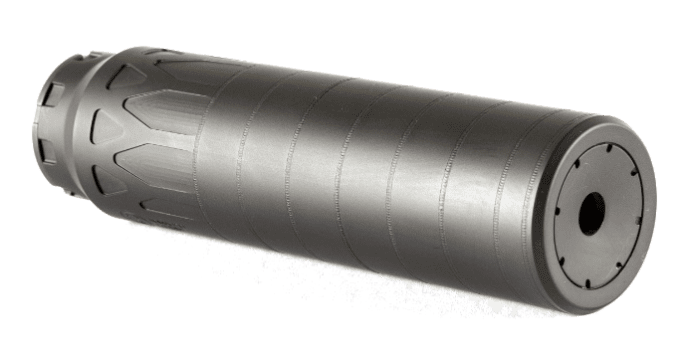
#1 — A Suppressor
With no hesitation or doubt in my mind whatsoever, I can unequivocally state that the best muzzle device you can put on a rifle (AR-15 or otherwise) is a sound suppressor. AKA a silencer.
They may not have the recoil reduction of a muzzle brake, but cutting felt recoil by about 50% is nothing to sneeze at. Speaking of sneezing, a suppressor reduces muzzle blast to about that level. For the shooter, muzzle blast and concussion are reduced almost entirely. This alone makes the experience of shooting a rifle vastly more enjoyable.
Obviously those gunshots won’t be as loud with a firearm muffler attached. In most cases a suppressor is designed to reduce volume levels by at least enough that decibels enter the “hearing safe” zone. In contrast, many muzzle brakes, compensators, and flash hiders actually increase sound levels at the shooter’s ear (brakes are typically extremely loud!). With a suppressor, you’ve effectively moved your ear protection from your head to the muzzle of your rifle. Much more convenient. Safer, too.
Finally, most sound suppressors are also excellent at flash suppression. While not typically marketed as a flash suppressor, that silencer will reduce muzzle flash by as much as most dedicated flash hiders and light years more than a muzzle brake, typical compensator, and certainly a bare muzzle.
While the cost of entry is high and there’s paperwork and a wait period involved (Silencer Shop makes the process the easiest in the country, FYI), a suppressor is the best AR-15 muzzle device you can possibly choose.
Now, if I had to choose a silencer to single out as the best rifle silencer currently available? . . . ooph, that’s a hard one. But I’ll do it: the Dead Air Nomad-30.
With a fully modular mounting system, a large diameter and short length, 17-4 PH stainless steel construction, swappable end caps, the ability to be used on anything firing a .30 caliber (7.62) or smaller projectile, and a modern, tubeless design with the sharpest little laser welds I’ve ever seen — and, yes, it’s super quiet — the Nomad is my number #1 rifle suppressor suggestion right now.
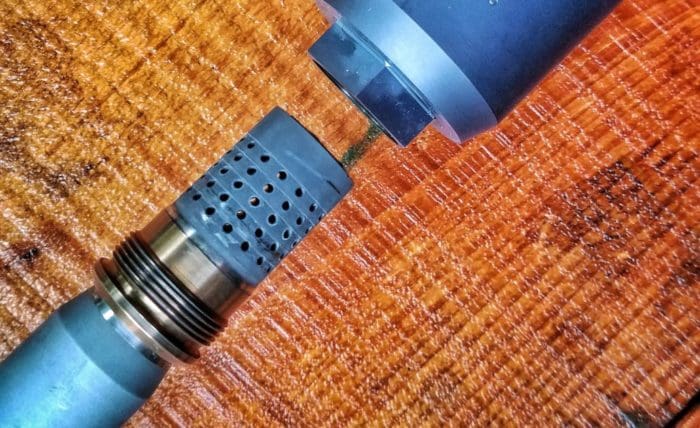
#2 — Cherry Bomb by Q
I have no idea how the Cherry Bomb performs on its own (we’ll find out in test #4)! But it’s the best muzzle device for attaching a suppressor to a rifle. That’s right, we’re still on the suppressor thing because it’s so far in the lead as the best AR-15 muzzle device choice that it owns both the #1 and #2 slots in my little listicle here.
Q’s Cherry Bomb is what I’d have to call a semi-quick detach option. It isn’t as fast as many of the quick-and-dirty, spring-loaded, ratchet- or click-on systems that often require only a quarter or half turn of the suppressor, but it’s way faster than a direct thread suppressor. Instead of 20-ish rotations to tighten, with the Cherry Bomb it only takes five spins to go from removed to completely tight.
Just hand snug — and relatively gently, at that — will do it. Thanks to the large taper mount section, a suppressor on a Cherry Bomb is far less likely to loosen on its own than one up against a square shoulder. Inside the Cherry Bomb is another taper mount area for use on a tapered barrel, but it’s also compatible with a standard, square-shouldered barrel. You definitely want the suppressor coming off the brake rather than the brake coming off the barrel, so tighten that sucker down via the 1/2″ socket drive shape on the Cherry Bomb’s muzzle end. No crush washer needed, as the Cherry Bomb doesn’t have to be timed.
Thanks to the taper’s location in front of the threads, those threads will always be as clean as new. This, not threads in front of taper, is the way to do it right. Just look how clean the taper and threads are in the photo above, despite all that carbon baked onto the compensator area!
Obviously the Cherry Bomb works directly with Q’s own Trash Panda and Thunder Chicken suppressors, and now with the Plan-B by Q it’ll also work in the aforementioned Dead Air Nomad-30, a bunch of SilencerCo cans, and some others. Inside a suppressor, the Cherry Bomb acts as a sacrificial blast baffle, bearing the brunt of the high pressure, high heat, and abrasive particle-filled gas exploding out the barrel. It’s nicer to wear down a $75 part than the blast baffle of your $800 silencer.
Cherry Bombs are available for .223/5.56 with 1/2×28 threads as well as for .30/7.62/6.5 applications with 5/8×24 threads. Basically, you can install them on most of your AR-15s, AR-10s, and bolt actions and quickly move the same suppressor between them all.

#3 — Precision Armament AFAB-556
So you live in some lame place where silencers aren’t legal? Okay, I’ll continue this “best of” list just for you. Everyone else, save up and buy a dang suppressor.
My favorite all-around AR-15 muzzle device is the Precision Armament AFAB-556 Hybrid Muzzle Brake. To be clear, it isn’t really the best at anything. It doesn’t win at reducing felt recoil, taming muzzle rise, providing muzzle flash suppression, or eliminating muzzle blast. But it’s better than average in every category and it’s my go-to choice. Which means it’s the best.
The AFAB-556 cuts recoil in half. It does this with a minimum of blast and concussion (more than a linear compensator, less than most other options), and it isn’t as loud as other brakes and comps. It’s very nearly as good a flash hider as an A2 birdcage, but keeps the muzzle far more stable. The AFAB-556 is fairly compact and light weight, and darn if I don’t love how it looks on a semi-auto rifle. As with everything from Precision Armament, the machining and finish quality is as good as it gets.
To be fair, Precision Armament’s EFAB is slightly better in nearly every way. But it’s substantially more expensive and I prefer the looks of the AFAB.

#4 — Best For Recoil Reduction
In AR-15 Muzzle Brake Shootout #3, the SJC Titan edged out the reigning champion, the Precision Armament M4-72. Though it’s currently the best AR-15 muzzle brake I’ve tested by eliminating 78% of rearwards recoil, I’m also 100% confident it will not win shootout #4.
A handful of new brakes have hit the market with one primary goal in mind: win TTAG’s fourth muzzle brake shootout. Using similar and often even fancier recoil testing rigs, these companies have tweaked, refined, and iterated until, at least according to what they’ve told me, they’re crushing the performance of the Titan and the M4-72. When test #4 finally happens, keep a close eye on:
• Ultradyne Apollo Max
• Precision Armament Hypertap (Precision Armament claims 84% recoil reduction vs. the M4-72’s 75%)
There are others, like the ZRODelta Cowl Induction Brake Gen2, that I expect will be right in the mix with the past winners and perhaps even edge them out. But my guess is the Apollo Max or Hypertap will be the new king of the hill. We’ll see!
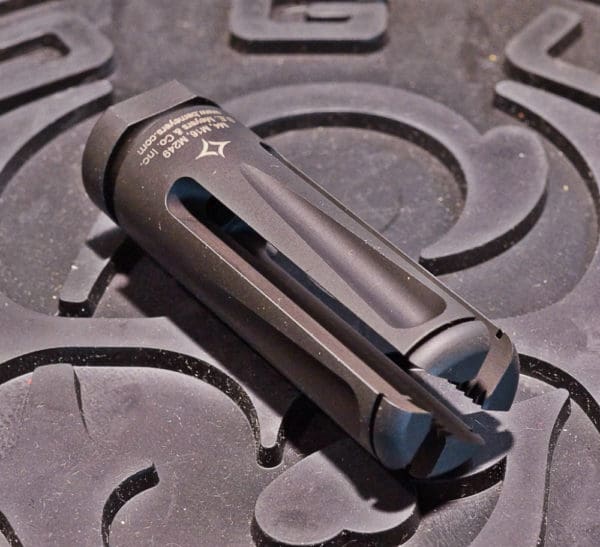
#5 — Best For Flash Suppression
Whether you call it a flash hider or a flash suppressor, the B.E. Meyers 249F is the best on the market at killing nearly every last bit of muzzle flash. How much of a difference does it make? Check this out:
Bare muzzle:

B.E. Meyers 249F:
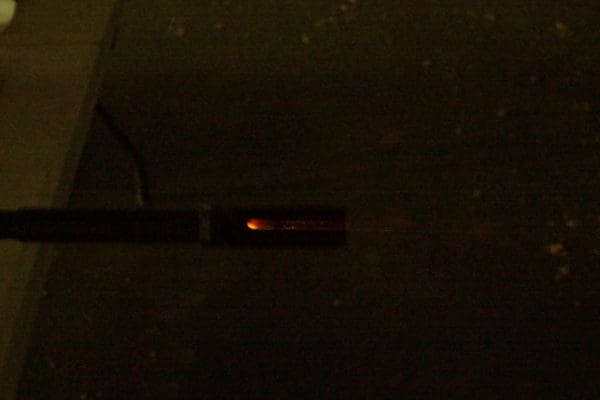
From the shooter’s perspective there’s nothing to damage your low light night vision. No flash or brightness visible whatsoever. From the side, if you can see into one of the slots, you may catch the tiniest kernel of flame inside the base of the 249F. From 50 yards directly down range, it’s blackness.
Various military units — domestic, NATO (NSN: 1005-01-526-3464), and otherwise — run the B.E. Meyers 249F and variants designed for other calibers. It works. It’s the best AR-15 flash hider on the market. And, best of all, you don’t even have to enlist to get one.
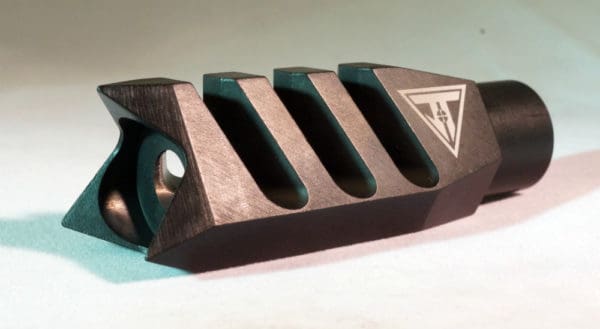
#6 — Best For Eliminating Muzzle Rise
This category is stupid. There’s no such thing as muzzle rise or muzzle climb inherent in AR-15 rifles. The bore is directly in-line with the cycling parts, which are directly in-line with the zero-drop stock. Picture this:
Imagine an AR-15 is floating in mid-air (whether hung by two strings or by magic) parallel to the ground. The center of the receiver extension (buffer tube) is backed up against a trailer ball affixed to a gazillion-pound truck. There’s nothing at all on the muzzle. The gun fires.
It does not move. There is no force sending the barrel upwards. The only force is rearwards (maybe the smallest bit of sideways force as the empty case is ejected out to the right). Unlike a rifle where the recoil pad is lower than the bore, the rearwards force does not generate any leverage that causes the muzzle to climb. So what is it, then, that causes muzzle rise, even with an AR?
It’s you. Muzzle rise in the AR platform is the shooter’s fault. It’s from allowing the rearwards push to push you around. You’re tipping backwards from your ankles on up to your shoulders — often mostly at the waist — and the effect is your torso leans back. The gun follows and the muzzle climbs as your shoulders recline. Many shooters also position the stock of an AR-15 high on their shoulders with the centerline of the receiver extension way up there. Sometimes literally above their body. This will cause the rifle to roll up the shooter’s shoulder. Not due to muzzle rise, but due to rearwards recoil.
So how much muzzle rise compensation do you need? How much do I need? How much does a competitive shooter or an Operator operating operationally need? Heck, how much do I need when I haven’t been shooting for a while and how much do I need when I’ve spent all week shooting an AR-15?
There is NO correct answer to this. Other than to provide a neutral muzzle device that can then be tuned by the end user to add incremental amounts of downwards force and to eliminate the actual cause of “muzzle rise,” rearwards recoil. Ultimately, the better one’s shooting position and fundamentals are and the less rearwards recoil they have to fight, the less muzzle compensation they’ll need and even a small amount will be annoying as they’ll be fighting that downwards force on every shot. A neutral AR-15 is a good AR-15, but the ability to add a little compensation to suit one’s shooting style is always nice.
BUT . . . I’m told I have to pick a winner. So, what’s the best AR-15 muzzle device for combating muzzle rise? Why, that would be the Juggernaut Tactical Juggerbrake. The hands-down muzzle rise killing champion of the world received a rock solid and well-deserved, zero-star rating from me in its review. It slams the muzzle down so freaking hard that the barrel visibly bends. Unless you want follow-up shots in the dirt by your toes, I’d look elsewhere. But it’s still the anti-muzzle rise winner.

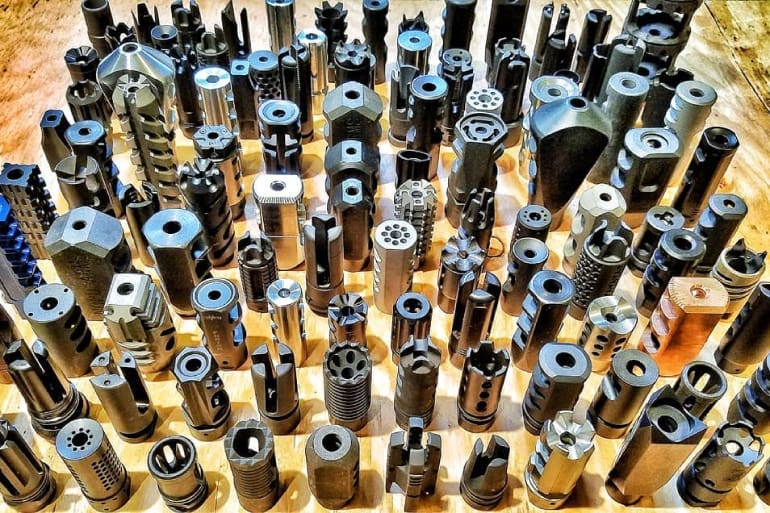



The A2 birdcage deserves an honorable mention for flash suppression since it’s both effective and dirt cheap.
Always a good topic to revisit Jeremy. Are there any linear compensators that are worth considering?
I replied with the following to another linear compensator comment earlier today, so I’ll copy-and-paste it here if that’s alright:
I really haven’t noticed a clear difference between any of them. If a linear comp is on your radar to send blast and concussion downrange (it will still not be anywhere remotely close to hearing safe for the shooter, but blast and concussion are gone), I’d choose based on budget and which one looks the best to you. I like the Ultradyne one a whole lot (JWT included details on it in his review of the Ultradyne sights) and I like the Black River Tactical Covert Comp. I also like things like the Indian Creek Design Blast Forwarding Device since it can be used with nearly any brake or comp or FH on the market and goes on and off quickly.
My Silencerco Omega suppressor is quiet and has a highly effective muzzle brake built in. Best I’ve ever used and I’m a stamp collector.
How about putting captions on the photos so it is easier to see what you are talking about?
But that’s single category ratings. What about well-rounded in all categories…
…or at least multiple categories including compact size and weight for the more average user as opposed to special ops stuff
#1 and #3 on this list are there because they’re well rounded in all categories. Did you read the words? For instance on #3, stuff like how it starts with “my favorite all-around muzzle device is…”
You are so right, sir. Need to “suppress” my speed reading, lol. When I scrolled down, #4 titles onward, kinda boldly stood out that I missed it. Thanks!👍✌
I was eyeballing Q cans at the LGS for my new .300 blk AR pistol. Those have a definite drool factor about them.
I’d love a suppressor, but the cost is simply too high. Both the dollars and the fact that it means I’d be registered with the ATF on a deeply personal basis.
Legalizing suppressors seems a lost hope at this point. Trump utterly ignored the legislative agenda, and now he has lost the House. So nothing happening there.
Agreed. I’ve thought about it time and again and decided that it isn’t worth it. I don’t need to set around for a year and wait for the government to give me the okay to go pick up something I already own and that shouldn’t be regulated anyway. And I get to pay a $200 tax to exercise a right. It’s a matter of principle at this point.
All true. But at the end of the day you’re still without a suppressor and the .gov don’t care one iota. And they’re soooooo nice to have on a rifle.
I see your point. It’s almost like getting a root canal. You hate the idea of getting it and paying for it, but a few days after it is done you forget all about it?
In a way, that’s also what scares me about it. Once I get one and think “That wasn’t so bad!” then I won’t be able to stop buying them and I’ll end up in divorce court. LOL
LOL. Yes. There’s that!
Ok. Riddle me this Jeremy S.
Would you mind doing an article on the entire process involved in buying a suppressor? Or do you have a link that you could provide that would walk us cretins through the step by process of what to expect if we took the plunge into procuring a “root canal”? It seems like a daunting task for the uninitiated.
Silencer Shop really does make the process very simple. FFLs around the country have their little ATM-like kiosk machines that allow you to do everything right there at your LGS. Ultimately it’s just a simple application and paying that $200 tax. You include fingerprints and a passport photo (with the kiosk thing you can do those at the gun store) and Silencer Shop submits all the paperwork. When the approval comes back like 8 months later you pick up the suppressor at the gun store. They also make it very easy to create a simple trust through which to purchase the suppressor, which is nice because you can easily add other people to it in the future (e.g. so your wife is legally able to be in possession of the suppressor).
Last spring Robert and I went to Silencer Shop and I filmed the process beginning to end. He can’t help joking around in the video, but if you can get past the Trump stuff you’ll see all the info that gets filled out. That’s literally it. At the end of the process you see on this vid, Silencer Shop submits everything. RF picked up his can like 7 months later. Video:
https://youtu.be/IR5plbmv2aQ
Thanks for the info Jeremy! You really want me to get divorced don’t you!
I always figured if I did get one I would start with a rimfire and work my way up. I’ll watch the video and then I’ll check with some LGS’s and go from there.
If you put your zip code in on a product page on the Silencer Shop website, it’ll list the FFLs near you that work with them. I believe a thumbprint icon signifies the shops with a SID kiosk. If there isn’t one of those near you it’s not a big deal, you’ll just have to fill out the paperwork manually and get fingerprint cards done somewhere and go to a Walgreens or something for passport photos. Most FFLs take care of then actually mailing that package of stuff off to the ATF.
Don’t get divorced. This is an important safety device. Imagine how frustrated the wife would be if you couldn’t hear anything she said. Then again… 😉
Thanks Jeremy, you enabler! I’ll definitely check into it. I’ll just spend my next root canal money on a can instead. I’ll be sure to send you a pic if/when I get one.
Passport photos are a ripoff. Most places wanted $15 per person for 2. We took pictures with a phone, editted them with the State department app, and printed 8 on a page for $.97 at Office Max.
Autistic screeching
Classy.
#5 – Product Discontinued by the Factory
Shocking
A2 birdcage. It works, it’s proven.
Best linear comp?
I really haven’t noticed a clear difference between any of them. If a linear comp is on your radar to send blast and concussion downrange (it will still not be anywhere remotely close to hearing safe for the shooter, but blast and concussion are gone), I’d choose based on budget and which one looks the best to you. I like the Ultradyne one a whole lot (JWT included details on it in his review of the Ultradyne sights) and I like the Black River Tactical Covert Comp. I also like things like the Indian Creek Design Blast Forwarding Device since it can be used with nearly and brake or comp or FH on the market and goes on and off quickly.
Please try the Simple Threaded Device, at there websight
I actually bought the Precision Armament M4-72 after reading and watching the recoil sled tests. I will say that it does well for lowering recoil for quick follow up shots, but it is not fun to stand on the side of someone shooting it, and you will definitely go home smelling like burnt gun powder.
Apparently the Hypertap improves recoil reduction performance and has WAY less blast than the M4-72. So that’s pretty cool if correct. The baffles certainly are not angled rearward as much. The Ultradyne Apollo has even more blast than the M4-72.
No golf ball launcher on the list?
No muzzle rise on an AR? Go back to school, both linear and angular momentum problems must be solved simultaneously and you forgot angular. The center of gravity on the AR with a loaded nagazie is typically below the barrel. When the rifle recoils backwards from the forces in the barrel, it will both move back and rotate about the cg as the applied forces do not act through the cg.
Again though, even in that scenario it’s rearwards motion that causes it, not anything inherent in the gun that’s forcing the muzzle up. It’s the shooter allowing the gun to lurch rearwards and rotate around its polar moment of inertia or whatever. Also, where that point is depends completely on the gun and its setup. Put a scope on it and you could easily be wrong; the center balance point may well be above the bore now instead of below it. Or perfectly centered. But maybe only with a full mag and as you fire the balance point moves up.
Anyway the point remains: eliminate rearward motion (whether with a brake or better shooting technique or both) and you eliminate “muzzle rise.” Creating downwards force on the muzzle is a bandaid trying to compensate for the symptom, while stopping rearward motion eliminates the actual cause.
Muzzle rise is real. Due to the weight and mass of the rifle below the center of bore. The only way the rifle could go straight back after firing is if there was equal mass above, and below the center line of the bore. Let’s say you were right about muzzle rise not existing on it’s own. The human being behind the rifle needs something to compensate for the muzzle due to human error. But muzzle rise does exist on own.
It does not. For the reason I stated right above your comment, which is a reply to exactly the same thing as what you just said. Your whole premise is predicated on rearwards movement being the cause.
There’s nothing pushing the muzzle of the gun up. The muzzle only goes up if the gun jumps rearwards. Eliminate that with a very good brake and the muzzle will stay rock-freaking-steady. Eliminate it with a solid shooting position and the muzzle will stay rock-freaking-steady.
Plus, in your scenario the balance point of the gun is variable. It may be centered or it may be above the bore line. Rearwards motion may cause the muzzle to go down, for all we know, should a given AR-15 have a scope up above the bore as many do. Regardless, any up or down muzzle movement in this scenario is a symptom of rearwards gun movement, not something that happens separately. Fix the cause, not the symptom.
Are all of these options specifically limited to 16/18/20” barrels? I’m looking for a flash comp for a 7.5” 5.56. Probably more flash than comp, but both would be nice. I’m a fan of the Afab, and the Griffin M4SDII, but I’m not sure how well they’ll work and hold up to such a short barrel. Anyone’s opinion is welcome.
I have a Lantac Dragon. As the shooter, I love it. The people around me hate it.
It’s a super popular brake, but there’s no way I’d ever consider it to be in the running for the best one. There are many that reduce recoil more and many of those do it with less flash, less blast, and less concussion than the Dragon. Objectively speaking it’s fairly mediocre among brakes with baffles and ports but above average for concussion and such. I think it rocketed to extreme popularity mostly because it looks really good. Which, as brakes for 5.56 go, IS a perfectly valid reason to choose one muzzle device over another IMHO.
Yea. It came as part of the standard setup for the Raven. Honestly, even being middle of the road, this thing shoots so flat with NATO 5.56 that it’s hard to imagine it being better or even needing to be, so although the blast is annoying, it’s not that big a deal!
No such thing as muzzle rise? So when I am running 30 rounds though my SR556 with a Franklin Binary trigger, at machine gun speed, it must be the gasses causing my muzzle to rise.
Oh, the muzzle rises. But it isn’t a force on the muzzle pushing it up, it’s you getting pushed rearwards. I’d go into more detail, but I already did that in the article 😉
Brownells says the B.E. Meyers 249F is discontinued manufacture by B.E. Meyers
Hmm. Well, it’s still readily available at Ballistic Advantage, Modern Outfitters, and other places.
I personally prefer the looks of the EFAB over the AFAB. As for the cost, at only $43 more it’s not hard to buy that subscription to the “buy once, cry once” school of thought.
But that does not mean I’m not working on buying suppression.
I purchased a Seekins Precision FH three years ago after reading your first flash hider test to reduce digital nv whiteout with very good results. Fast forward to today and I’ve just purchased a Nomad-30 suppressor and Dead Air’s internal flash hider and muzzle brake. The shop didn’t have the end cap flash hider attachment.
I’ll have to wait 8 months for a stamp. I’ve found no list of suppressors with or without flash hider tests demostrating their efficacy.
Do you anticipate conducting any such tests? Follow up shots with Digital night vision scopes are pretty useless without really good flash hiders.
You’re going to love it! If you have a way to purge the oxygen inside the suppressor before shooting, you’ll be totally muzzle flash free. If not, depending on ammo and barrel length and suppressor and other factors, you may get some flame or flash on the first shot. Way, WAY reduced from bare muzzle (there was a suppressor or two in each of my flash hiding tests FYI) but not nothing. You could use a little dB foam or a worm of ultrasound gel or purge with CO2 then tape over the muzzle (chambered round to seal up that end). But with the FH muzzle device and that suppressor none of that may be necessary anyway!
Could you test the NERO® 556: Hybrid Muzzle Brake & Compensator? This is a 3D printed compensator that was designed to reduce recoil and Muzzle rise
But Expensive
Jeremy omits one very important factor in muzzle brake effectiveness, whether its recoil reduction or muzzle rise reduction.
Barrel length. And the answer isn’t what you think.
The shorter the barrel, the higher the “uncorking pressure”. Which is the pressure of the gas behind the bullet as it exits the barrel.
A short barrel has much more uncorking pressure. So a muzzle brake in going to be more effective.
Look at it this way. On a 10.5″ SBR, a muzzle brake is going to see about 11,500 psi of gas rushing out behind the bullet.
On a 16 barreled carbine, its going to see about 8000 psi
and on a 20 inch rifle, its going to see 5700 psi.
This greatly affects how much of a “push” the brake provides.
I have experienced this personally. On my 10.5″ SBR, the SJC Lund Titan causes the barrel to dip perceptibly.
On a 16″ gun, its perfect.
I currently use a $35 Miculek brake on the 10.5″ gun with it clocked to about 10:30 (I’m left handed) and the result is a muzzle that stays exactly in place, allowing me to see my hits through my aimpoint.
For more into on uncorking pressure, take a read here. This has become the “go to” article on uncorking pressure and barrel length because of its rigorously scientific methodology.
http://www.sadefensejournal.com/wp/?p=1093
I did not omit that; the entire sixth category is about that.
Run a brake that eliminates rearward recoil and you’ve eliminated the actual root cause of muzzle rise. Try a bandaid fix like jetting gas upward to push the muzzle downward and you’ll very rarely get the amount of force correct. As you detailed, the downward force provided by a given muzzle device varies drastically based on gas pressure, but also consider that the amount of force needed in the first place also varies drastically based on the particular shooter, the shoulder stock, and more. However, in every case if you eliminate recoil you will eliminate muzzle rise and the correct amount is always reducing as much as possible. There’s no such thing as too much recoil reduction, which is most certainly NOT the case with muzzle rise compensation.
When is the next test being published? I’m an addict need my fix. And more brakes for my spare parts bin…
I installed a Cherry Bomb on my 300 blackout. The threads are much finer. I thought I cross threaded. I send it back and manufacture retapped it like new. Meanwhile I got a 5.56 can and from manufacturer I bought what they called “Three Leg Jack” threaded muzzle. The threads are corser and fits.
1. Is there a threaded muzzle out their in 7.62 with corse threads?
2. Or with tapered Cherry Bomb wrench it on and leave it?
3. Or get another Three Leg Jack that fits my can and have gunsmith drill from 5.56 to 7.62?
If anyone can suggest something. Greatly appreciated!
Just Did..
$140, no stamp required, shooter noise reduced
https://www.wittmachine.net/sme-sound-mitigation-equipment-non-class-iii/
Well Jeremy I am not trying to start a pissing match here but as a gunsmith and guy who competes in both 1000yd light gun and unlimited gun class benchrest there is inherent muzzle rise in every rifle with rifling in it. If you shoot a right twist (as most barrels are) you always have a to the right and up twords 2 o clock torque. It’s why a benchrest shooter named Pope started making left hand gain twist a long time ago who was right handed, so the rifle would torque opposite way up into the shooters body. Torque gets worse especially with fast twist barrels shooting heavy long range bullets. I experienced this with my unlimited gun 7mmRSAUM that has a 30″ 1.250″ diameter straight blank 1:8twist I chambered and threaded for it I shoot 183smk with 3020fps. I had severe torque rise with it that i fixed eventually by machining a 6″ aluminum rectangle sled rail for each side of the end bottom of the forest which I
Milled the stock out for and made steel dials to epoxy in place. Solved the problem. This issue was even while shooting with my $1000 Viper mechanical front rest with a protektor front bag and protektor benchrest rear bag both with 3m super slick material
Hi Jeremy I hope you see this. I was wondering if you are planning to do the 4th test any time soon or if that series is finished? I am making an AR15 right now and would love to know if the Titon is still #1 after your next test or not. I feel like it might be unseated as champion by the Hypertap but who knows.
Hi Jeremy I’m hope you see this because I was wondering what we can do to help you do a 4th test on the muzzle brake especially the one’s you listed. maybe do a 2nd ar10 muzzle brake on the sjc titan extreme, precision armament hypertap, and ultradyne apollo max to see how really efficient they are with large caliber rounds. A lof of people have been waiting and hoping for you to do these test
Comments are closed.